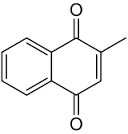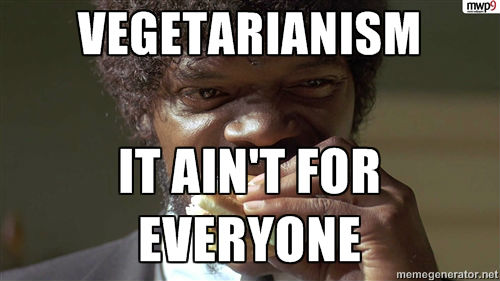There is a frothy chatter percolating throughout the blogosphere about vitamin K2.
It began in the paleo section of the woods with Sisson, Kresser, and Masterjohn, and has since gone upstream to more mainstream guys like Mercola, Weil, and even (ahem) Dr. Oz joining in on the konversation. (That’s the last time I’ll use a “K” to incorrectly begin a word, promise. I’m a sucker for bad jokes).
Why K2?
Is there something pathetic and wimpy about regular ol’ K that makes it inferior as a nutrient to this more mysterious form of the vitamin? Why are all these good looking internet authorities with chiseled six-packs and 21 Day transformation bootcamps singing its praises?
Does it move the needle for various conditions hitherto unheard of with other nutrients? Or do they simply like to irrationally parrot on about anything that can be found in butter that’s good for you?
Friends, these are grave mysteries and figuring out the answers MIGHT VERY WELL TAKE US TO THE EDGE OF THE UNIVERSE. To understand this konundrum (sorry, I just can’t help myself), let us open our minds, soften our hearts, and bathe ourselves in the salty goodness of biochemistry, clinical nutrition, and organic chemistry to make ourselves self-anointed experts in this nutrient and how/why it might help us in our lives.
So exciting! Don’t you agree?
[amd-zlrecipe-recipe:4]
The Anti-Aspirin, and So Much More
If you were born in the last fifty years one of your first experiences coming out of the womb was probably getting a needle jacked up your butt by a nurse practitioner. She (or he) was giving you vitamin K.
It and mommy’s tit were the first things waiting for you after you came down the pike.
And that nurse wasn’t doing it for shits and giggles. The reason for its rectal administration is because vitamin K activates proteins that clot your blood.
And for the first 50 or so years of its existence, that’s about all there was to say about it.
That’s what the textbooks said. It’s what da gub’mint based its dietary recommendations on, and in the nutraceutical world there was a noticeable silence on vitamin K containing superfoods from the hills of Cochabomba. Blood clotting just didn’t capture the public zeitgeist like high cholesterol and morbid obesity.
But lately that’s changed. It turns out that vitamin K, in addition to coming in a variety of forms, also bestows a wide variety of health benefits.
When it’s not activating thrombin (the blood clotting protein), vitamin K works very closely with vitamins A and D to provide structure to bone, keep your arteries humming, and reduce inflammation.
The common denominator to all these functions is that vitamin K allows protein to bind minerals. Particularly calcium.
When K is finished acting on a protein, the amino acid glutamate is converted to something called gamma-carboxy glutamate, which can then serve as an active site to bind calcium. [footnote]For the nerds, the chem structure for this modified compounds looks like this:  [/footnote]
[/footnote]
This might sound trivial, but its no small potatoes for certain organs.
Vitamin D and calcium are well known for being important to bone health, but your bones’ ability to actually bind calcium is complete only after certain proteins have been activated by vitamin K. Vitamin D is used to make the bone proteins, and then vitamin K is used to activate them.
Have you heard stories about how Japan has more really old people than any other nation?
A curiousity about them was how they had such low levels of osteoporosis despite not consuming much dairy. Turns out that, while they don’t chug a lot of milk, their diet is rich in a food called natto – which is probably the richest source of the best vitamin K on mother earth.
So even though they didn’t consume much calcium, they were making extremely efficient use of what little they ate.
That’s probably better than what we do: fortify McMeals with low-grade ergocalciferol and call it a day.
You get healthy bones, and you don’t have to worry about hypertension, diabetes or cancer!
Oh Yeah, And Heart Attacks
Remember what I said earlier about vitamin K and binding calcium? That’s important for your arteries too.
In your circulatory system calcium is sort of like that drunk who just pulled out from Denny’s after a night of boozing and country fried steak: he better get off the road pretty quick or trouble might be a brewin.’
That’s because in the absence of vitamin K calcium parks itself into your blood vessels with reckless abandon. (You can download the link here).
Historically, calcified arteries was thought to be an inert process, and a surefire sign that a heart attack was right around the corner.
And once they were spotted? Fuhgedaboudit. Just fire up the defibrillator and hope you can jolt the poor sap back to life.
But it turns out the process is more dynamic, and the key hub in the calcification network is vitamin K. If a protein called MGP (matrix Gla-protein) is carboxylated by vitamin K, it’ll sweep calcium calcium out of your vascular tissue.
K1, Mk-4, Mk-7, Mk-Wha?!?
The talk around vitamin K involves a lot of confusing nomenclature. The best way to understand the differences is to know their chemical structures.
If you’re normal you’ll think that’s boring so here’s the abbreviated version:
K1: aka phylloquinone. The stuff found in plants. There is only one phylloquinone.
Menaquinones: aka k-2. There are 12 types. What they all have in common is a certain molecule called an isoprene unit attached to certain part of the base vitamin K molecule. They take the form mk-“something.” The “4” in mk-4 and the “7” in mk-7 refers to the number of isoprene units each molecule has. You can go up to mk-12.
How are these two types of vitamin K different in the body?
It comes down to a simple difference.
In your body vitamin K is a fat-soluble molecule and the menaquinones love fat. Their mk-ness makes it easier for them to stay dissolved in LDL particles(the same stuff that carries cholesterol) and that allows them to stay in circulation longer which increases their absorption. [footnote]This is due to their side chain. Menaquinone-4 has 4 isoprene units whereas menaquinone-7 has 7. The side chains are very non-polar which makes them more soluble in fat.[/footnote]
If you eat phyloquinone your body’s plasma levels will saturate with K1 about 6 hours after a meal, and the majority of it will be cleared from your system in a half-hour. If you gorge on natto the mk-7 will still be circulating in your blood 4 days later.
That extra time gives it more exposure to LDL receptors on your bone to get taken up and start doing its thing. [footnote]It’s likely that the combination of Apolipoprotein E and LDL receptors that’s responsible for getting vitamin K into most tissues.[/footnote]
To better understand this you just have to think about what kind of foods the different vitamins are found in.
K1 is found in leafy vegetables. Those are 90% water. K2 is mostly found in fatty animal foods and fermented foods (animals that ate the K1 containing grass). Eggs, liver, cheeses, and most of all NATTO are very good sources of menaquinones (aka K2).
A Menaquinone That’s Oh So Special
Despite there being a baker’s dozen different versions of vitamin K in the biological kingdom, there’s one in particular your body has a special affinity for: MK-4.
If you were to crack open your bones and pipet out the bone marrow you’d get a thick, oozing puss rich with MK-4. Its your bones’ preferred form of vitamin K.
Ditto your brain. It strongly prefers MK-4 and might even have its very own MK-4 receptor. And your pancreas. And your kidney.
In fact, mk-4 probably has a unique role in regulating a variety of genes that other forms of vitamin K don’t. You could say it’s kind of a big deal.
The only place where mk-4 isn’t king is in your liver. Here phylloquinone is the big man on campus.
The reason?
The types of vitamin-k dependent proteins that are made there. Blood clotting proteins exist……..in your blood. Because they’re water soluble they have a fast-turnover rate. Because phylloquinone is the form of vitamin K that’s quickest to dissolve they’re often partitioned to your liver to make these proteins while the slower-to-digest menaquinones get partitioned to your fatty tissue.
A Gourmand’s 240 Second Guide on What to Eat
Phylloquinone is abundant in the plant kingdom, useful, but not very potent.
MK-4 is your body’s preferred form.
So does that mean we ought to ditch our greens and instead opt for a meat-lover’s feast of egg yolks, liver, and hard cheeses? (DEATH TO VEGANS!!!!!)
Not exactly. While it’s true that your body has a special love-affair for MK-4, your body has a bootstrapper’s mindset towards getting the mk-4 that it needs.
Where your body needs mk-4, it makes it there on the spot. It doesn’t wait to get it from the food you eat. Your body’s mk-4 levels arise in situ in the tissues that use it. It probably evolved this ability precisely because it couldn’t afford to wait around for an egg yolk or a nice cut of Jarlsberg to get the mk-4 that it needed.
What’s more, your body even destroys MK-4 itself before turning it back into MK-4 in the tissues where it can be used. So despite being the preferred form, it doesn’t get VIP access in your digestive system. It gets sent to the enzymatic chopping block just like everyone else. [footnote]This more than likely happens by breaking down all foms of vitamin K into menadione:  this is the base molecule for all forms of vitamin K. After breaking it down, it then re-adds the sidechain to the lower right hand corner of the molecule. Read more at the link.[/footnote]
this is the base molecule for all forms of vitamin K. After breaking it down, it then re-adds the sidechain to the lower right hand corner of the molecule. Read more at the link.[/footnote]
Your body can turn all forms of vitamin-k into mk-4, and the majority of mk-4 in your body comes from the K1 that comes from your salad, not your steak.
In fact, as we’ll see later, supplementing directly with MK-4 is probably not the most efficacious route to take.
However, if want to take our vitamin K consumption TO A COMPLETELY INSANE LEVEL there’s a more direct route than downing lots of kale. (Not that there’s anything wrong with that).
Remember me jabbering on earlier about how the extra fattiness of the menaquinones makes them better absorbed with a longer half-life in your plasma?
And if you were paying attention you now know that any form of vitamin K can eventually be turned into MK-4.
Well, genius, if we combine these two thoughts then it follows that taking a highly fat-soluble form of the vitamin in fairly large quantities would probably be the best way to go.
Which brings us to……NATTO. A serving of natto contains about 1,000 mcg of mk-7, a longer-chain, more fat-soluble form of vitamin K than K1 or MK-4.
And when it comes to what it actually does in your body, natto just leaves the competition in the dust.
MK-7 vs MK-1
A useful study was published in the journal BLOOD in 2007 that compared how K1 (synthetically produced) compared to an equal amount of mk-7 from natto as a single dose and taken over time.
Folks, this one wasn’t even close.
The mk-7 from natto took his little brother out to the tool shed and didn’t even bother to use any lube on its way to DOMINATION.
- Serum half-life more than 10x longer than K1 w/ a single dose.
- Regular dosing led to prolonged serum levels that were 4x higher for mk-7
- A carboxylation rate 2x as high.
That is what we call K-WINNING.
There is a basic pattern in menaquinones: the higher the number in the MK-number the more effective it’ll be in your body. [footnote]This is because the isoprene side chains on menaquinones are very non-polar, so the longer they are the more fat soluble the molecules become.[/footnote].
And since your body turns the various forms of K into mk-4, taking mk-7 is a better way to increase mk-4 levels than taking mk-4 itself.
Son, You’re Not Getting Enough
The RDA for vitamin K is about 100 mcg.
It was formulated decades ago when we thought vitamin K’s raison d’etre was to clot your blood. That amount is what’s required to keep your blood from thinning out and forcing you to play Moses if you get a paper cut.
However, all that mk-4, bone-forming, gene-regulating stuff hasn’t really factored into the equation.
If we take a moment to think about the kinetics of vitamin K within the body, there’s good reason to think many people are not getting an appropriate amount.
The key point here is that the blood clotting functions of vitamin K happen in water (or blood, but close enough), whereas many of the other vitamin K functions happen in fat.
This is important because what happens in water tends to happen quickly. [footnote]One vitamin K molecule can carboxylate about 500 proteins before it gets degraded[/footnote] What happens in fat tends to happen slowly. Since vitamin K performs roles in both of these environments, getting an inadequate amount will cause your body to start leeching vitamin K from its bones to provide it for its quick-turnover blood clotting function.
A study published in The Journal of Bone and Mineral Research that elucidated this point nicely.
Rats were underfed vitamin K for 80 days.
What was interesting is that if you measured the mice’s blood clotting activity, their vitamin K levels looked fine. There was no fire. However, when they measured the vitamin K activity of their bones of their vitamin K it had gone down 100%. [footnote]To be more specific, the ucOC % (the amount of uncarboxylated osteocalcin) went from 25% to 50%. This is usually considered the best way to measure true vitamin K activity within the body.[/footnote]
Their bodies were robbing Peter to pay Paul, taking vitamin K from the slow-turnover bones to provide it to its liver to keep pumping coagulant.
If we apply this finding to the Standard American Diet, it’s not hard to see how wolfing down on B-Macs and Pizza the Hut might result in long term de-mineralization even though our baseline vitamin K levels might not be too far off the mark.
Pills, Pills, Pills
Like most nutrients, popping a vitamin K pill is not mandatory but perhaps useful in the appropriate circumstance.
Who might benefit?
- Vegans/vegetarians. (although I think a diet heavy in greens probably puts you ahead of most people even if you’re not gnoshing on organ meats)
- The elderly, especially women. (Vitamin K has a pretty good track record with improving bone mineral density).
- People taking vitamin D. (K and D work closely together so one augments the other).
- People looking to repair bad teeth. That calcification stuff is also useful for rebuilding your enamel.
Form, Form, Form
Supplementary vitamin K comes in three flavors: phylloquinone (k1), mk-4 (menatrenone), and mk-7.
Phylloquinone, despite being naturally found in plants, is synthetically manufactured for supplements. You make it by reacting menadione [footnote]menadione is the base structure of all vitamin K molecules[/footnote] with phytol in the presence of a nickel alloy.
The MK-4 found in supplements is also synthetic and made using a similar reaction.
MK-7 only comes from natto.
I think if you’re choosing a K supplement mk-7 is the clear way to go. In a variety of studies (here, and here) it’s been the clear winner in terms of bioavailibility and really moving the needle. It DOMINATES.
MK-4 is a bit of a mixed bag. Studies like this one show that synthetically prepared MK-4 didn’t even register a dint of absorption when taken at a nutritional dose….but it also has some methodological problems. This one shows that menaquinones improve in absorption in a stepwise fashion the farther up the MK-something chain you go. Mk-4 included.
In general the dose-response curves for MK-4 supplementation is all over the map. Sometimes it works, other times it does nothing at all in small doses….even less than phylloquinone.
Perhaps there are subtle differences between dietary MK-4 and synthetic MK-4 that make a big difference.
I dunno. Sorry 😦
Dose, Dose, Dose
Most of the clinical studies done with vitamin K were done to study its effects on bone mineral density.
Ya know….will vitamin K protect granny from a hip fracture if she falls down the stairs?
Those sorts of questions.
Unfortunately, most of these were done w/ MK-4 in doses of 45 mg, WHICH IS WAY HIGHER THAN ANYTHING YOU CAN GET AT THE STORES OR IN YOUR FOOD.
On a more anecdotal level, Denise Minger fixed 18 cavities by taking 5mg of MK-4 from Carlson labs. So maybe you should just do that.
On a more technical note, it was found that supplementary MK-4 only begins to increase carboxylation at a dose of 1500 mcg, so that might be a useful floor to start with. [footnote]Takeuchi, A, Masuda Y, Kimura M, Marushima R, Matsuoka R, Hasegawa M,Takahama M, Onuki M; Minimal effective dose of vitamin K2 (menaquinone-4) on serum osteocalcin concentration in Japanese subjects and safety evaluation of vitamin K2 supplemented in calcium tablet. J Jpn Soc Clin Nutr 2005, 26: 254-260[/footnote]
But on an even better note, there a few clinicals that have shown MK-7 to have significant effects at 180 mcg or so. This, combined with its demonstrated effectiveness at entering into the body, makes for the most appropriate supplementary target.
Little is known about how much vitamin K is too much, but nothing bad has happened so far. Vitamin K is not stored in your tissues very much, so the threats from long term toxicity like D and A are much smaller.
And when it comes to K supplements I think there’s clearly a crown jewel that deserves attention here: the A, D, K supplement from DaVinci Labs. All three of these work together inside your body so it makes sense to include them in one pill.
It uses the best forms of all three (retinol palmitate, D3, and MK-7), and it has a NICE 625 mcg serving of natto-derived K2, which should be more than adequate (but definitely non-toxic) for most supplementary measures.
So I’d get that one.
So…….
Amigos, it’s been fun. For some reason this article took longer than usual to write. Sorry, I don’t know why.
Until the next time.
Buh-bye.






Great article, really enjoyed it. I eat a lot of fermented foods and Ive always thought my body feels more limber when I eat them. I had always expected there was something it that caused that (it didn’t seem like I was making it up) and maybe this is it.
LikeLike
Please elaborate on “fermented foods,” like what?
LikeLike
Gary,
Natto is the biggest one, which produces MK-7. Most other fermented foods will have at least some amount of long-chain vitamin K.
LikeLike
[…] I’ve written before, there’s good reason to believe people have inadequate levels of vitamin K. Current RDA’s are based on levels of activated blood clotting proteins which doesn’t […]
LikeLike